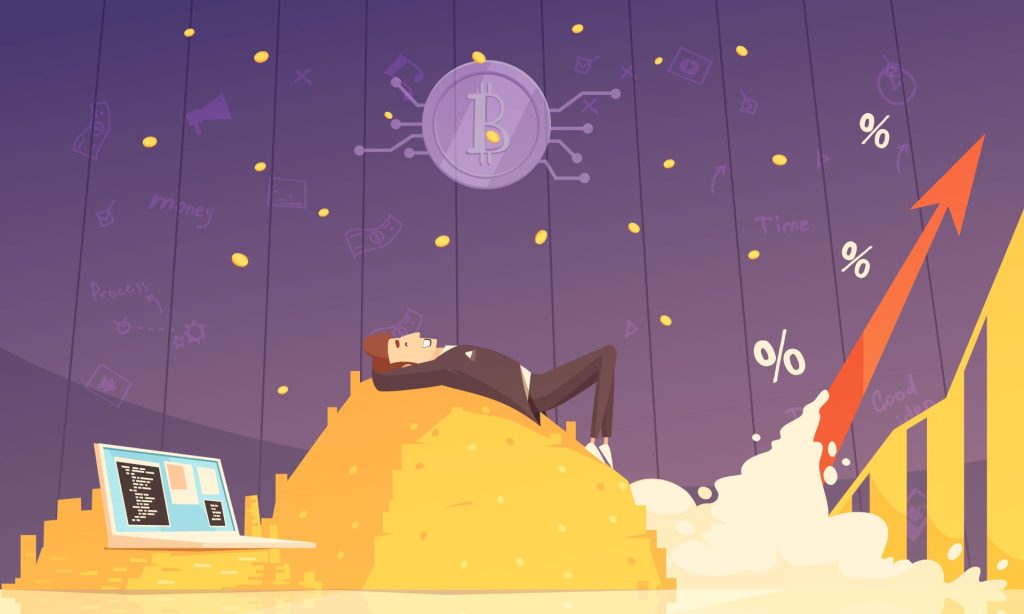
How Hash Rates Work: The Engine Behind Crypto Mining
The term “hash rate” gets thrown around a lot in the crypto world, especially when people talk about mining or network security. But what does it actually mean? Why does it matter? And how does it shape everything from your mining profits to the safety of Bitcoin itself?
This guide walks through the technicals, the context, and the consequences of hash rates in crypto.
What Is a Hash in Blockchain?
At the core of blockchain technology is a process called hashing. A hash is a digital fingerprint a string of letters and numbers that represents data in a fixed-length format. No matter how big or small your input, the output is always the same length.
Bitcoin uses a specific cryptographic function called SHA-256 to generate these hashes. If you change even one character in the input, you get a completely different output. That’s what makes hashing so powerful it’s fast, consistent, and secure.
In a blockchain, hashes are used to:
- Protect the integrity of transactions
- Chain blocks together securely
- Power the mining process
Here’s what a SHA-256 hash might look like:
00000000000000000006b2eeb76f1a14b89b9e0c8c395df3e3a46e73ec9cf8e5
This isn’t just a random string; it’s the result of complex calculations behind the scenes.
What Is Hash Rate?
Hash rate measures how many hashes a machine can compute in a second. It reflects the computational power used for mining and securing the blockchain.
It’s measured in:
- H/s (hashes per second)
- kH/s (thousands)
- MH/s (millions)
- GH/s (billions)
- TH/s (trillions)
- PH/s (quadrillions)
- EH/s (quintillions)
The higher the hash rate, the more guesses a miner can make per second. And that’s what mining is: a guessing game to find the correct hash for the next block.
How Mining Works: Hash Rate in Action
Mining is not about solving a complicated math problem manually. It’s about running machines that brute-force the answer. Here’s how it works:
- The network sets a target hash value.
- Miners compete to find a number (called a nonce) that, when hashed with other block data, produces a hash below that target.
- This is purely trial and error. Billions of guesses are made every second.
- The first miner to hit the target wins the right to add the block and earn rewards.
The reward includes:
- The block subsidy (newly minted coins)
- All transaction fees from that block
In Bitcoin, this happens roughly every 10 minutes. More hash power = more chances to win.
Hash Rate vs. Network Difficulty
If too many miners flood the network with high-powered machines, blocks would be found too quickly. To avoid this, the blockchain uses difficulty adjustment.
- Bitcoin recalculates mining difficulty every 2016 blocks (roughly every 2 weeks).
- If blocks are mined too fast, the difficulty increases.
- If blocks were too slow, the difficulty decreases.
This keeps block times consistent and makes sure rewards aren’t handed out too quickly.
Hash rate and difficulty constantly chase each other one reflects the real-time horsepower of miners, the other sets the challenge level.
Mining Hardware: Not All Machines Are Equal
Not every computer is built for mining. Here’s a quick breakdown:
- CPUs: Your average computer processor. Almost useless today for real mining.
- GPUs: Graphics cards. Still used for some altcoins. Powerful but versatile.
- ASICs: Application-Specific Integrated Circuits. These are built for one job only — mining a specific algorithm like SHA-256 for Bitcoin. Extremely efficient but expensive and non-reusable.
Example:
- Antminer S19 Pro: 110 TH/s
- NVIDIA RTX 3080: ~100 MH/s for Ethereum (before the Merge)
ASICs dominate Bitcoin mining. GPUs ruled Ethereum until it switched to Proof of Stake.
Can We See the Hash Rate?
Not directly. You can’t measure the hash rate of a whole network like you would a machine. Instead, it’s estimated based on:
- How quickly are blocks being mined
- What the current difficulty is
Sites like BTC.com or CoinWarz show network hash rates using this data. These figures fluctuate due to things like:
- Price drops (which push miners offline)
- Energy price changes
- Regulatory crackdowns (like China’s mining bans)
Hash rate trends can indicate confidence or pressure within the mining community.
Security: Why Hash Rate Really Matters
Hash rate isn’t just about mining rewards; it’s also about protecting the blockchain.
A high total hash rate makes a network more resistant to attacks. Specifically, it protects against the 51 percent attack, where someone gains control of the majority of hash power and could:
- Reverse transactions
- Double-spend coins
- Censor others’ transactions
For a network like Bitcoin, the sheer size of the hash rate makes this financially and logistically unfeasible.
But smaller Proof-of-Work coins with low hash rates can be targets. This is why decentralization and distribution of mining power are just as important as raw speed.
Different Coins, Different Hash Rates
Each blockchain has its own setup:
- Bitcoin: SHA-256, very high hash rate, ASIC-dominated
- Litecoin: Uses Scrypt, still mined, but lower hash rate
- Monero: CPU-friendly, privacy-focused, uses RandomX
- Kaspa: Gaining attention for high-efficiency GPU mining
- Ethereum (pre-Merge): Used Ethash, mined with GPUs
- Ethereum (post-Merge): No more mining now, Proof of Stake
Each algorithm requires specific hardware, which shapes the ecosystem around it.
Economics of Hash Rate: Profit and Pressure
Mining is a business. Miners are constantly doing cost-benefit analysis:
- Can my hardware beat the network difficulty?
- Are my electricity costs low enough?
- Is the crypto price high enough to justify staying online?
A sudden spike in crypto prices can send hash rates soaring as miners turn their machines back on. A prolonged bear market does the opposite.
Hash rate becomes a live metric of miner sentiment. When miners believe the network is worth investing in, they commit more hash power.
Hash rate isn’t just technical jargon. It reflects real-world investment, energy use, hardware battles, and the security backbone of the biggest blockchains.